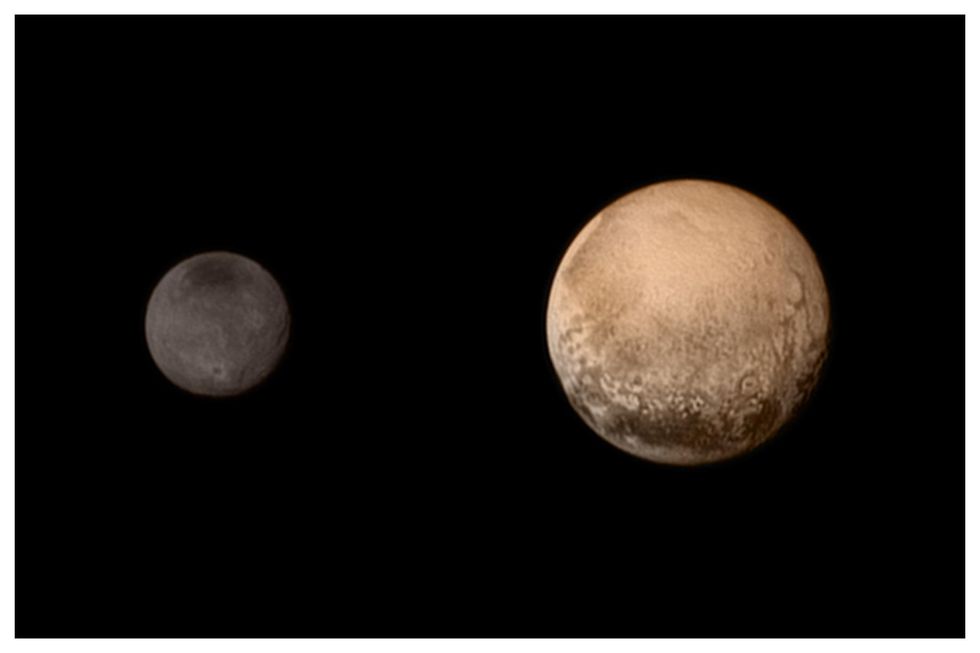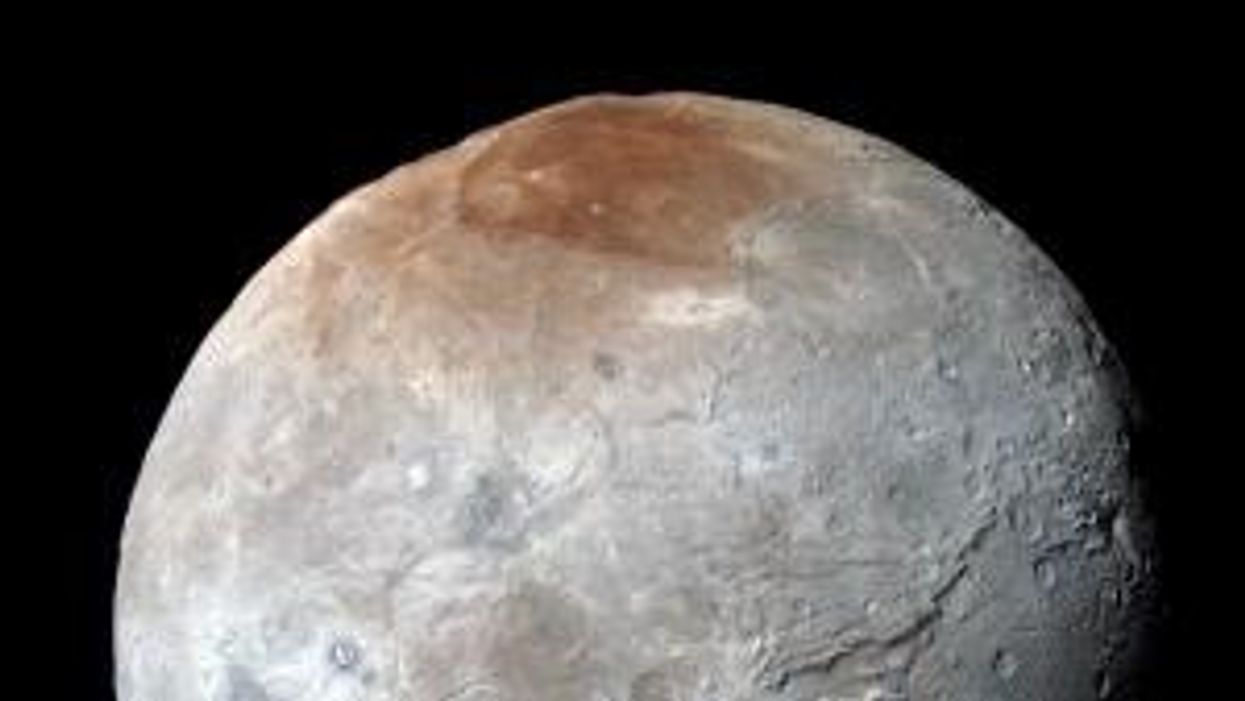Breanna Robinson
Jun 22, 2022
Pluto’s Largest Moon Has a Mysterious Red Color and Scientists Might Finally ...
Video
Pluto's moon Charon has an unknown red North Pole - and scientists may know why.
In 2015, New Horizons (NASA's interplanetary space probe) took a picture of the moon's rust-coloured North Pole on its flyby.
And since then, scientists have wondered what planetary processes were responsible for leaving a significant landmark.
According to Science Alert, scientists initially thought the rust-coloured smear (which is nicknamed Mordor Macula) was methane captured from Pluto's surface.
So, its red hue is due to slow baking in the Sun's ultraviolet light.
But now, experiments in the laboratories and mix modeling have indicated that the early thoughts about how the smear came to be weren't that far off, just with a little modification.
Sign up for our free Indy100 weekly newsletter
New Horizons, which was launched in 2006, helped researchers get an unparalleled view of the dwarf planetary system Pluto and Charon at a distance of over 5 billion kilometers (3.1 billion miles) from the Sun.
Although red might not be an odd colour to see on an iron-rich planet like Earth or Mars, red is likely to show the presence of a group of compounds called tholins. They are described as "tar-like" and "brown gunk."
The brownish-red chemicals are essentially UV light baking gases such as ammonia or carbon dioxide.
For Pluto, methane would most likely be the starting place for it. To become a tholin, the small hydrocarbons need to absorb a specific UV light colour filtered by Lyman-alpha, which are orbiting hydrogen clouds.
It was thought that the methane shed from Pluto could float across to its orbiting moon.
The precise timing needed for the gas to settle and freeze into a distinctively diffuse smear always caused roadblocks.

SwRI researchers modeled the up and down motion of the largely tilted planet system to figure out what would happen.
The researchers found that the explosive nature of spring's arrival could cause the smear.
The fast warming of the North Pole would take place over several years, which is a flash in the moon's 248-year orbit of the Sun.
Regrettably, the modelling believed that the swift movement would be too fast for the frozen methane to absorb adequate amounts of Lyman-alpha to become a tholin.
Ethane, on the other hand, would be a different narrative.
Ujjwal Raut, a planetary scientist and lead author of a second study that demonstrated changes in the densities of methane as it freezes and evaporates, said that ethane is "less volatile than methane."
Raut also said that the gas remains frozen to Charon's surface well "after spring sunrise."
"Exposure to the solar wind may convert ethane into persistent reddish surface deposits contributing to Charon's red cap."
Having results of laboratory experiments, Raut and his team's study was able to show a comprehensive way methane could transform into ethane at the poles.
The one problem with this was that the Lyman-alpha radiation wouldn't make ethane produce a reddish sludge.
This still doesn't disqualify hydrocarbon.
Charged particles streaming for long periods of time from the Sun still create vast chains of hydrocarbons that would make Charon have its reddish pole hue.
More lab tests and modelling could add to the hypothesis that Charon's rust stain is still complex.
The research was also published in Science and Geophysical Research Letters.
Have your say in our news democracy. Click the upvote icon at the top of the page to help raise this article through the indy100 rankings.
Top 100
The Conversation (0)














